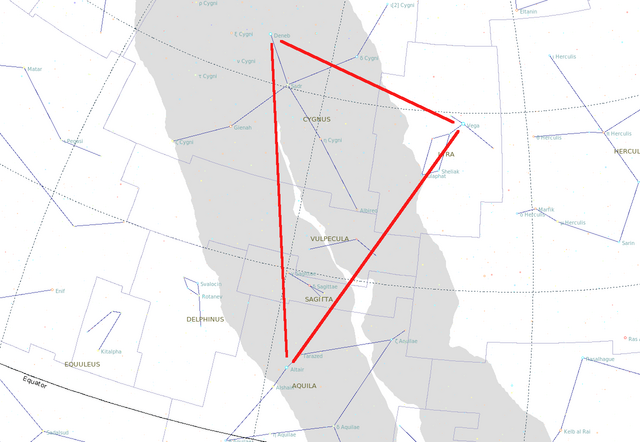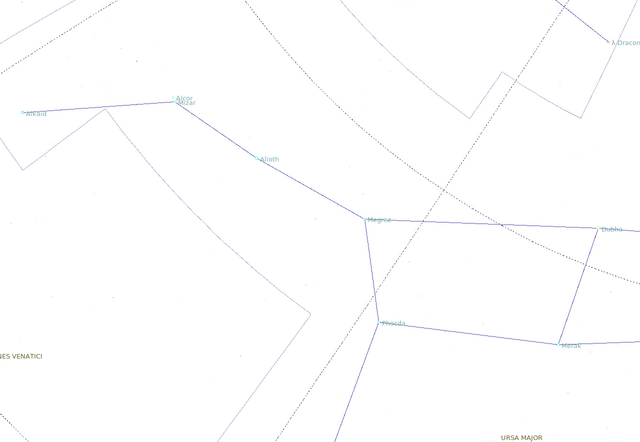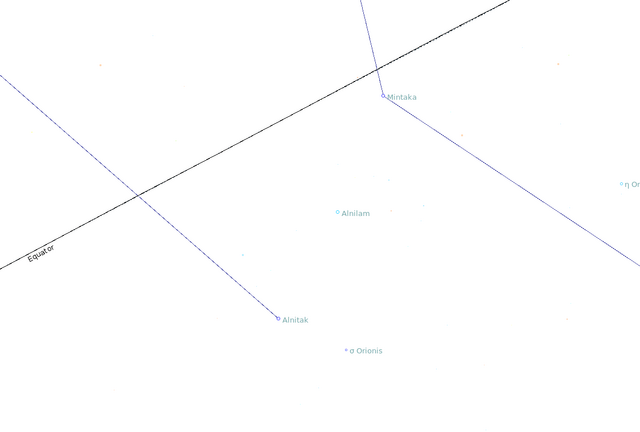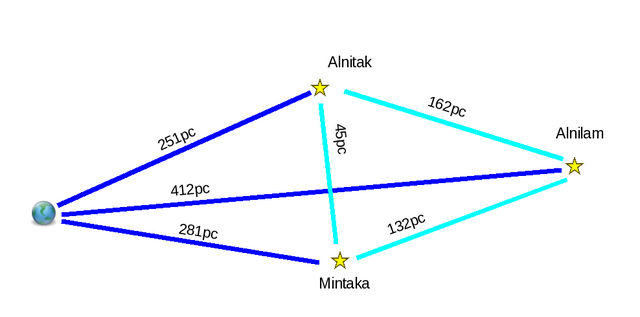Asterism
Asterisms are groups of stars in the night sky that appear to form an easily recognizable pattern. The pattern can cover a large area of sky or such a small area a telescope is needed to see it. Asterisms can have only few stars or many stars. They can be contained entirely within one constellation or spread out over many.
Contents |
Common asterisms
There are several well known asterisms that even most non-astronomers will recognize. The Big Dipper or Plough is made up of seven bright stars in the shape of a dipper or pot. This asterism is generally always visible in the Northern Hemisphere and is one of the first asterisms learned by children. One has to remember that the Big Dipper is actually only a small part of the much larger constellation of Ursa Major and not a constellation on its own.
Another commonly recognized asterism are the stars that make up the bright stars in the constellation of Orion. This is also one of the most recognized constellations and asterisms for most people, primarily due to the brightness of Orion's three belt stars.
Some less well known but still easily recognized asterisms are the Great Square of Pegasus and the Summer Triangle. Neither of these constellations are contained within one constellation, with the Great Square having stars in both Pegasus and Andromeda. The summer triangle's stars are located in three seperate constellations, Cygnus, Lyra and Aquila.

|

|
Cautions about asterisms
It is important to realize two things about asterisms. First, just because stars appear to be together in the sky it doesn't mean that they are actually together in space. Second, that asterisms are not the same as constellations.
Stars not together in space
What we see in the night sky is an apparent projection of the stars onto an imaginary celestial sphere. This fools us into thinking that all the stars are the same distance away from us. This is not necessarily the case. To see this, lets look at the belt stars of Orion Alnitak, Alnilam and Mintaka. They form part of the asterism that makes up most of the constellation so there are many more stars in the asterism, but we will look at these three since they appear close together in the sky as the map below shows.
The way these three stars appear together is due to our position here on Earth. Now if we were to take another vantage point from some arbitrary point were we were looking "down" on the three stars and the Earth, we'd see something completely different. The drawing below shows the distances between the stars and us as well as each other in parsecs.
As we can see, the closest any of the stars gets is 45pc (about 147 ly) apart. Alnilam is almost twice as far from Earth as the other two. So despite their appearance close to each other in the night sky, they aren't very close to each other at all.
Asterisms are not constellations
A second caution about asterisms is that an asterism in of itself isn't a constellation. As was seen above, the asterism that is the Big Dipper is only part of the much larger constellation Ursa Major. The asterism that is the summer triangle is actually made up of stars in three separate constellations and a line connecting the three stars would cross through the space of five constellations. Even if an asterism, for the most part, makes up the whole constellation, such as with Orion, there's more to the constellation than the asterism would suggest.


